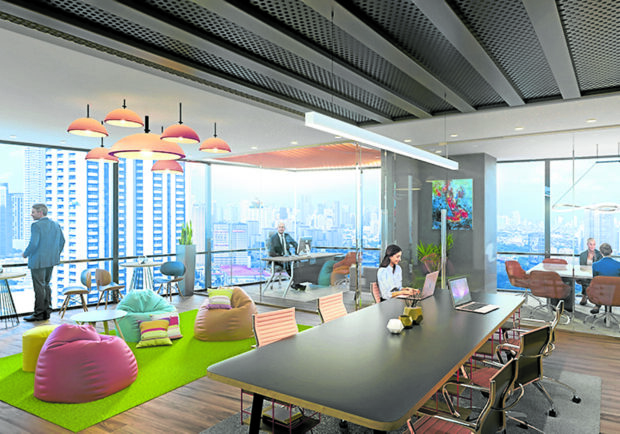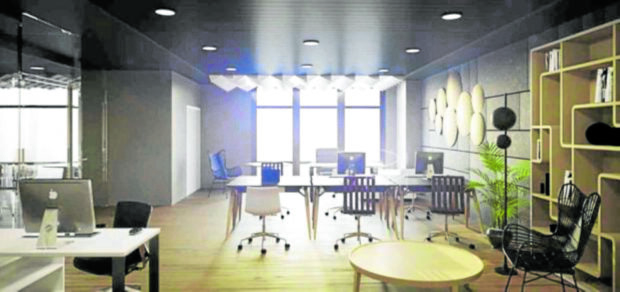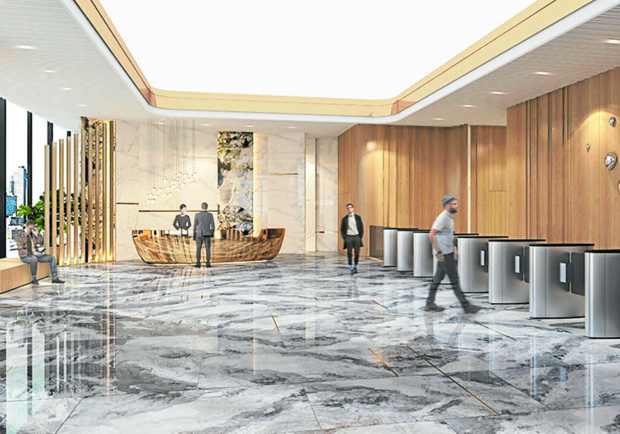Opportunities and threats for the local office market

Companies are now increasingly looking to higher quality buildings, with better facilities and amenities, to continue to attract employees back to the office.
The IT and business process management (IT-BPM) sector has the potential to both accelerate and prevent the risk of office obsolescence in the Philippines, according to Cushman & Wakefield.
“ReThinking the Office Sector”, a report released by the global real estate services firm, showed that just 28 percent of office stock across Asia Pacific currently meets the needs of top corporate occupiers that is, office stock that is both A-Grade and holds sustainability accreditation.
When weighing the risk of obsolescence, the report considered factors including the average age of prime office assets, the percentage of prime stock to total stock within a market, return-to-office rates, the rate of sustainability accreditation and employee density benchmarks. The report looked at 10 key markets across Asia Pacific namely Beijing, Shanghai, Hong Kong; Bengaluru, Delhi NCR, Mumbai; Melbourne, Sydney; Singapore; and Tokyo.
Sister reports launched by Cushman & Wakefield show that 85 percent of office buildings in the United States and 76 percent in Europe either risk obsolescence or will require some form of repositioning in order to remain relevant.
The drivers are different. In the US, low return-to-office rates, weaker office jobs growth and the densification of workplaces, exacerbated by new supply, means 1.1 billion square feet of excess office space is predicted by 2030. In Europe, sustainability legislation that stipulates minimum energy requirements be met before a building can be leased has accelerated the risk of obsolescence caused in part by an ongoing flight-to-quality and made more pronounced by the rise of hybrid and remote work.
Article continues after this advertisementResilience against obsolescence
In the Philippines, resilience against obsolescence is provided by the country’s jobs growth forecast, which is the third strongest in the region after mainland China and India, and which is driven largely by the IT-BPM sector.
Article continues after this advertisementClaro Cordero, director and head of Research, Consulting & Advisory Services at Cushman & Wakefield, said that the IT-BPM sector, which accounted for approximately 70 percent of office leasing transactions prior to the pandemic, continued to exert significant influence over all aspects of the local market.

The need to retrofit existing office stock will be greater for those buildings which do not currently meet Grade A standards.
“The vast majority of IT-BPM companies still require employees to work in the office, and this relatively high return-to-office rate in the IT-BPM industry has helped to sustain office space demand within the local market,” he said. “These companies are now increasingly looking to higher quality buildings, with better facilities and amenities, to continue to attract employees back to the office as they compete for talent with other industries which have been more open to hybrid and working from home models.”
However, the dominance of the IT-BPM sector in terms of office space demand could also be a risk factor for office obsolescence.
“Over the past two decades, the focus of the market has been on these outsourcing companies, which typically do not require premium office buildings. These non-prime buildings, particularly those that are older and have run 24/7 operations, typically see a higher level of depreciation and so are likely to face a higher risk of obsolescence. The need to reposition, retrofit or repurpose existing office stock will be greater for those buildings which do not currently meet Grade A standards, or which lack sustainability accreditation,” Cordero said.
“The increasing importance of future-proof (i.e., Environment-Social-Governance (ESG)) and high-spec developments for large occupiers such as IT-BPM companies and even for small and medium enterprises/companies have been highlighted due to increased rate of digitization. Office developers in the Philippines need to map out an effective asset lifecycle optimization plan to get ahead of the curve and maintain market relevance for future occupier demand and growth industries,” he added.
